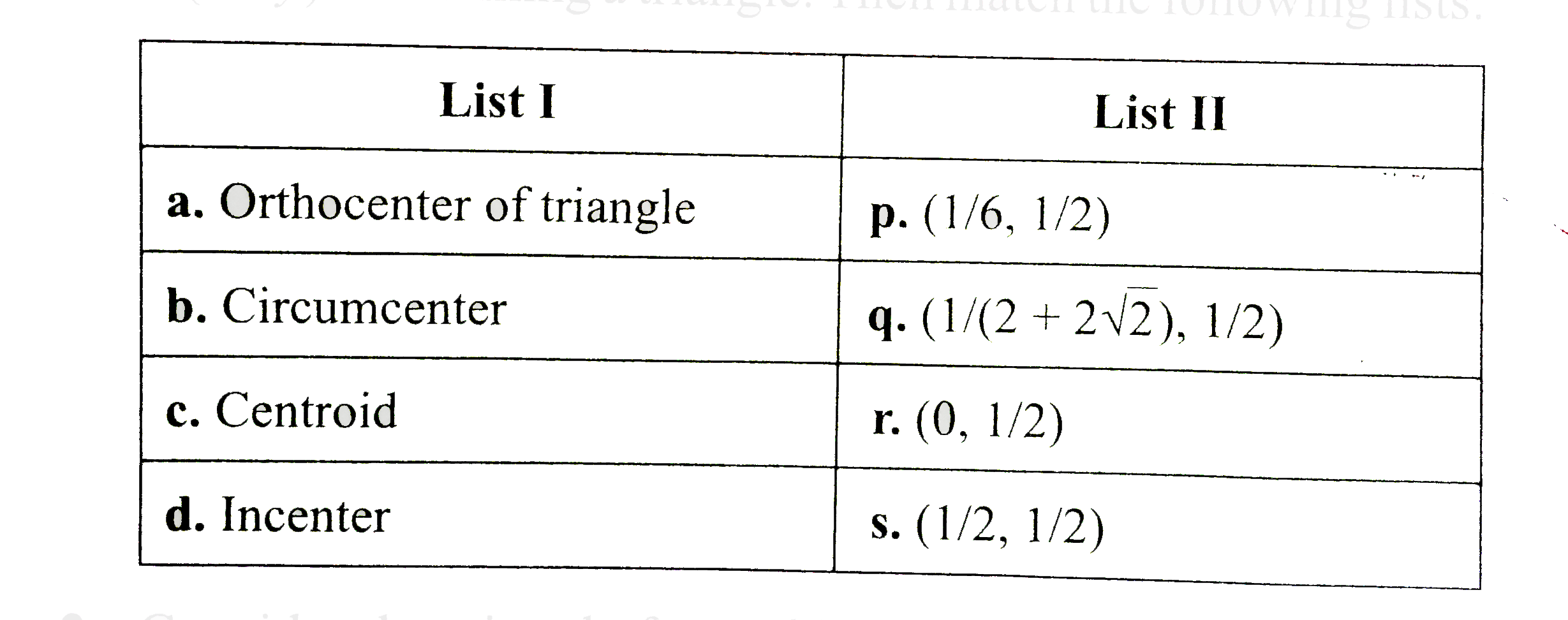The ends of a diagonal of a square are (2,−3) and (−1,1). Another vertex of the square can beSolution in Bengali
(−3,/2,−5/2)
(5/2,1/2)
(1/2,5/2)
none of these
The correct Answer is:A, B
For square ABCD, the vetices of diagonal AD, (2,-3) and D(-1,1), are given
Topper's Solved these Questions
- BOOK - CENGAGE PUBLICATIONCHAPTER - COORDINATE SYSYEM EXERCISE - Linked10videos
COORDINATE SYSYEM
- BOOK - CENGAGE PUBLICATIONCHAPTER - COORDINATE SYSYEM EXERCISE - Matrix match type4videos
COORDINATE SYSYEM
- BOOK - CENGAGE PUBLICATIONCHAPTER - COORDINATE SYSYEM EXERCISE - Exercises59videos
COORDINATE SYSYEM
- BOOK - CENGAGE PUBLICATIONCHAPTER - COORDINATE SYSTEMEXERCISE - Multiple Correct Answers Type2videos
COORDINATE SYSTEM
- BOOK - CENGAGE PUBLICATIONCHAPTER - CROSS PRODUCTS EXERCISE - DPP 2.213videos
CROSS PRODUCTS
Similar Questions
For points P=(x1,y1)and Q=(x2,y2) of the co-ordinate plane a new distance d(P,Q)=|x1−x2|+|y1−y2| is defined .Let O(0,0)and A(3,2). The set of points in first quadrant which are equidistant from O and A is
07:38View SolutionConsider the lines represented by equation (x2+xy−x)×(x−y)=0 forming a triangle. Then match the following lists:
 02:32View Solution
02:32View SolutionABC is an isosceles triangle. If the coordinates of the base are B(1,3) and C(−2,7) , the coordinates of vertex A
07:03View SolutionCoordinates of points on curve 5x2−6xy+5y2−4=0 which are nearest to origin are
02:50View SolutionLet →a and →b be two vectors of equal magnitude 5 units. Let →p,→q be vectors such that →p=→a−→b and →q=→a+→b. If |→p×→q|=2{λ−(→a.→b)2}12, then value of λ is
07:13View SolutionIf (alpha,beta) is one end of the diagonal of a square and equation of other diagonal is x-y=alpha vertex of the square is:
View SolutionThe ends of a diagonal of a square are (2,−3) and (−1,1). Another vertex of the square can be (−32,−52) (b) (52,12) (12,52) (d) none of these
07:13View SolutionIf (a,b) be an end of a diagonal of a square and the other diagonal has the equation x-y=a, then another vertex of the square can be
02:58View SolutionOne diagonal of a square is 3x-4y+8=0 and one vertex is (-1,1), then the area of square is
06:31View SolutionThe diagonal of a square is 8x- 15y =0 and one vertex of the square is (1, 2). The equations to the sides of the square passing through this vertex are
05:36View SolutionThe diagonal of a square is 8x- 15y =0 and one vertex of the square is (1, 2). The equations to the sides of the square passing through this vertex are
05:11View SolutionThe diagonal of a square is 8x- 15y =0 and one vertex of the square is (1, 2). The equations to the sides of the square passing through this vertex are
07:00View SolutionThe ends of a diagonal of a square are (2,−3) and (−1,1). Another vertex of the square can be (a) (−32,−52) (b) (52,12) (c) (12,52) (d) none of these
03:15View SolutionOne diagonal of a square is 3x-4y+8=0 and one vertex is (-1,1), then the area of square is
02:16View SolutionIf (a,b) be an end of a diagonal of a squae and the other diagonal has the equation x-y=a then another vertex of the square can be
05:46View SolutionIf (a, b) be an end of a diagonal of a square and the other diagonal has the equation x−y=a, then another vertex of the square can be
04:30View Solution

